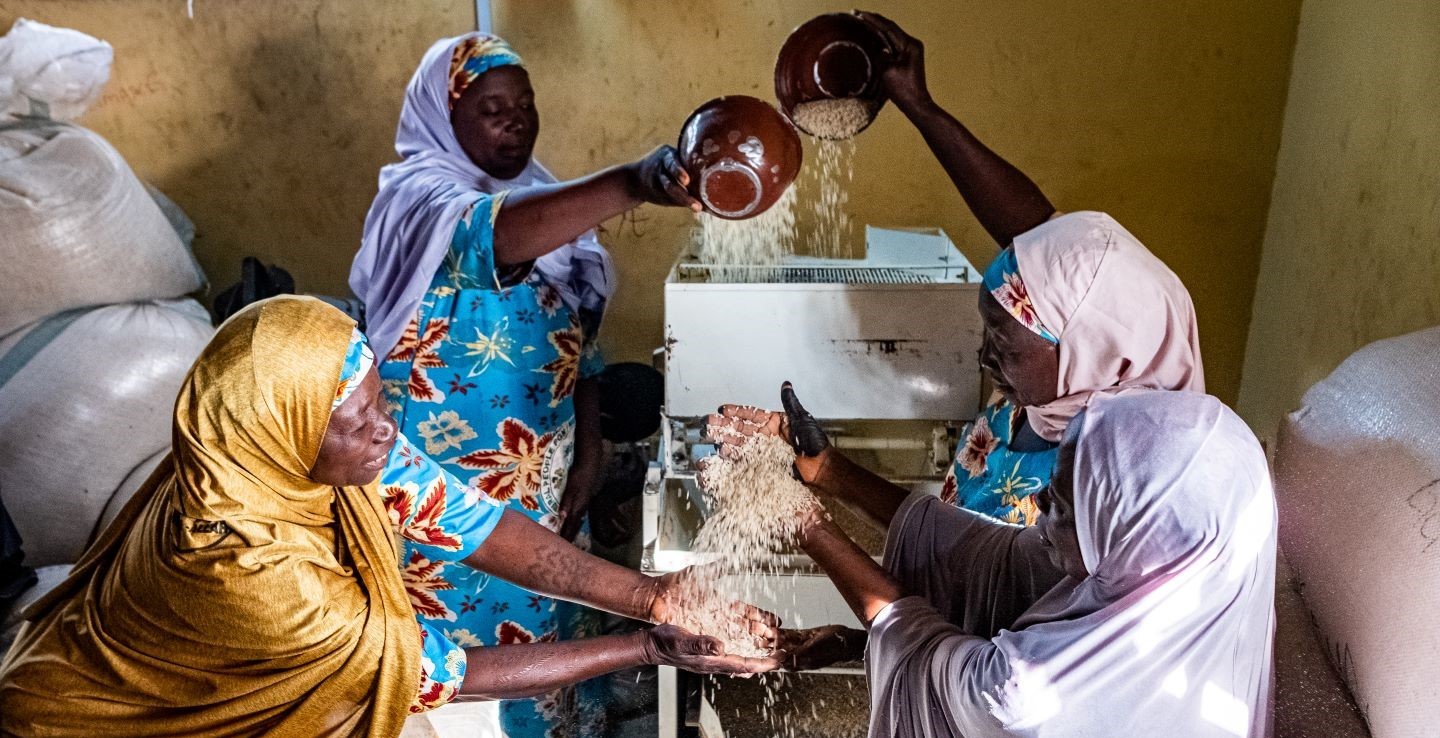To achieve the SDGs we must first transform how we feed the world
IFAD Asset Request Portlet
Asset Publisher
To achieve the SDGs we must first transform how we feed the world
Estimated reading time: 3 minutes
After a prolonged period of decline, hunger has increased worldwide and accelerated during the COVID-19 pandemic.
Indeed, in 2020, 811 million people – one in every ten – experienced hunger. Three billion people, nearly half the world’s population, couldn’t afford healthy diets. These startling figures are a stark reminder that we need fundamental transformation in our food systems if we are to achieve the global commitment to Sustainable Development Goal (SDG) 2 – to end hunger and malnutrition, in its all forms, by 2030.
This year we commemorate, for the second time, World Food Day held under pandemic conditions. The theme is Our Actions Are Our Future. It’s time to ask what actions we must take to build that better future, in which food is produced sustainably and efficiently, providing good nutrition to all, while protecting the environment. How can food systems be transformed so that all the world’s people – and especially its rural-dwellers who produce much of our food – earn decent livelihoods?
One thing is certain. If our food systems stay as they currently are, we will not achieve this vision, nor will we achieve SDG 2.
Food system challenges
IFAD’s Rural Development Report explores the challenges constraining global food systems transformation for nutritional equity, environmental protection and rural prosperity. It points out that the three are heavily interlinked.
While food production has grown dramatically – in quantity and calories – since the Green Revolutions of the 1960s, this has been accompanied by environmental degradation. Globally, foods systems are responsible for 37 per cent of greenhouse gas emissions.
A longstanding focus on providing enough calories instead of balanced nutrition has contributed to a triple burden of nutrition, where societies struggle simultaneously with undernutrition, overnutrition and micronutrient deficiency.
About 3.4 billion people live in rural areas of developing countries, where smallholder farmers are responsible for 60–80 per cent of food produced. Most are extremely or moderately poor. Without adequate rural livelihoods, they risk further poverty and food insecurity.
The three challenges to food systems transformation are tied up in issues related to unequal food market competition, dependency on food income and food loss and waste.
Finding solutions
To transform our food systems, we must enhance the productivity of small-scale farmers within planetary boundaries, and move towards diversified agricultural production by adopting nature-based and knowledge-based agriculture: agroecology, with sustainable intensification, and the use of technology to make informed choices.
SME entrepreneurship in the midstream, between farm and consumer, can create inclusive opportunities through employment, livelihood diversification and higher incomes. Entire value chain processes can be upgraded to improve efficiency and profitability and policies instituted that embed responsible investment principles and labour practices, gender equality, environment and climate. Creating opportunities for small-scale entrepreneurs and enterprises, avoiding concentration of power and ownership, and creating ways to access finance, skills-building and business support for entrepreneurship, are also essential.
Finally, social protection is critical for those with less resources. Through a transformative multiplier approach it is possible to stimulate demand for healthy foods alongside social safety net programmes and cash transfers that create purchasing power.
We need a low-carbon economy, with integrated and comprehensive strategies to overcome policy, regulation and financial constraints, to stimulate innovation across our food systems, and drive behaviour change among consumers.
A holistic approach, endorsed and implemented by both private and public stakeholders, can benefit us all, starting from small-scale producers. For this, we need increasing investment in rural infrastructure and innovation, improving food governance, developing capacity, and an ambitious reform agenda which accounts for the hidden environmental, health and poverty costs of our current food systems.
Measure impacts, not performance
What we call “food systems transformation” comprises bundles of investment projects designed, financed and implemented by national governments, donors and development partners. They encompass inputs and production, the transport, processing and manufacturing industries, retail and the consumption of food. Above all, they are contextual: what works in one country, society or geography may not work in another.
By using common metrics for the SDGs and food systems, we can map out causal pathways from project outputs to achieved SDG objectives. In practice, this means moving from performance evaluation, using monitoring and evaluation data, towards impact evaluation, with data collected using experimental or quasi-experimental design.
A world without hunger
As we celebrate World Food Day, it’s time to reflect on the actions we take now to create sustainable and diverse food systems for the future and achieve SDG 2.
To feed the world’s growing population, food production must increase by 20–30 per cent by 2050, and provide the nutrients needed for health and wellbeing. This must be achieved without causing environmental degradation and biodiversity loss. Small-scale producers living in vibrant and productive rural communities are fundamental to this goal.
Publication date: 15 October 2021